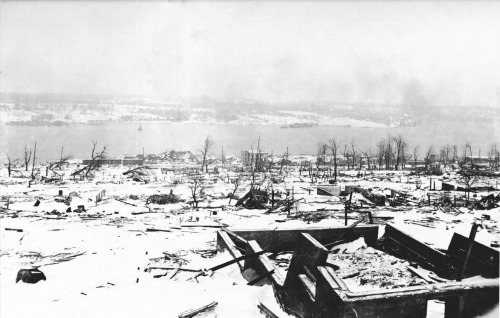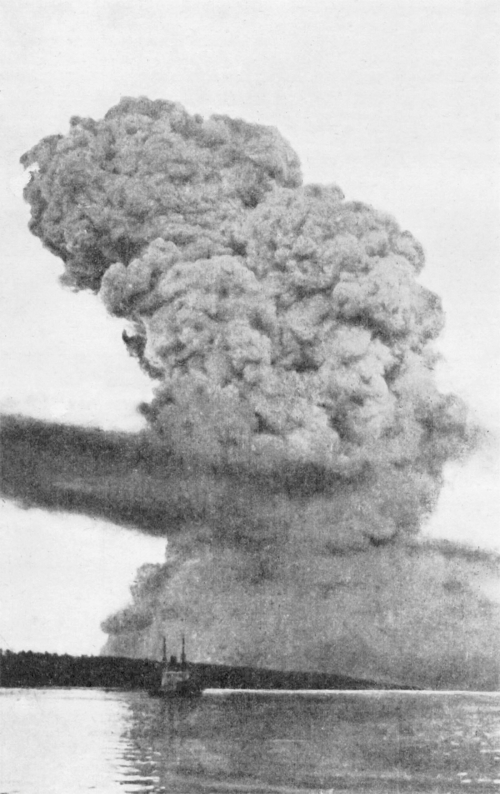On December 6, 1917, French cargo ship Mont-Blanc–loaded with explosives–collided with the Norwegian SS Imo near Halifax, Nova Scotia, Canada, resulting in the largest known man-made explosion prior to the atomic age. According to Wikipedia,
Mont-Blanc was under orders from the French government to carry her cargo of high explosives from New York via Halifax to Bordeaux, France. At roughly 8:45 am, she collided at low speed (approximately one knot (1 to 1.5 miles per hour or 1.6 to 2.4 kilometres per hour)) with the unladen Imo, chartered by the Commission for Relief in Belgium to pick up a cargo of relief supplies in New York. The resulting fire aboard the French ship quickly grew out of control. Approximately 20 minutes later at 9:04:35 am, Mont-Blanc exploded. The blast was the largest man-made explosion prior to the development of nuclear weapons, releasing the equivalent energy of roughly 2.9 kilotons of TNT.
Nearly all structures within an 800-metre (2,600 ft) radius, including the entire community of Richmond, were obliterated. A pressure wave snapped trees, bent iron rails, demolished buildings, grounded vessels, and scattered fragments of the Mont-Blanc for kilometres. Hardly a window in the city proper survived the blast. Across the harbour, in Dartmouth, there was also widespread damage. A tsunami created by the blast wiped out the community of Mi’kmaq First Nations people who had lived in the Tuft’s Cove area for generations.

